With winter fast approaching, it makes sense to think about places to spend it in. The Alps come to mind, in this case, with a culture well-accustomed to keeping warm in the winter chill. One place we absolutely love is Salzkammergut. We seem to return there time and time again. Kati’s mother actually worked in the area for a long while, and we just love exploring the Lakes and soaking in the culture.
You will see from our Instagram account, we post many photos from the area and the different lakes. Located a few miles east of Salzburg, Salzkammergut is a tourist region and UNESCO World Heritage site that straddles the Alps to its south. Owing to its location, the result is a winding cascade of lakes and rivers sandwiched between snow-capped mountains and rolling hills. Dotted along the shores and between the lakes are idyllic towns that retained much of its historical design. The lakes are as follows: Fuschlsee, Mondsee, Attersee, Wolfgangsee, Trauensee, Hallstattersee, Grundlsee, and Altauseersee. Each of these lakes are lined with small towns and resorts each with their own flair and claim to fame. You can also choose to take to the seas as most of the lakes have their own ferry companies owned and maintained by families from the area, or you can experience these towns in depth as the entire region is dotted with holiday rentals and resorts.
For much of its history, Salzkammergut was a culture hub and trading site with a vibrant mercantile industry centered on nearby salt mines. These salt mines give the region its name – Salz meaning salt, and kammergut meaning a territory held by a prince of the Holy Roman Empire. Contrary to what you might think, this is not the source of the name of the nearby city of Salzburg, which takes its name from the Salzach River (the word Salzach though did come from the word salt and an old German word for river, but I digress). This rich history and untouched pristine landscape make Salzkammergut somewhat of a paradise on Earth and is definitely worth your stay. Here, we’ll bring up some of the highlights to your attention.
Human culture has a long history in the area. Recently in Hallstatt, we visited a store and they were excavating in the basement. It happened to be an Iron Age excavation with many artifacts being found. So even thousands of years ago, people loved the area as we do today.
Mondsee
Mondsee is the most accessible of the Salzkammergut lakes being the closest to Salzburg and also having the A1 Highway running right by the town. The town itself has a lot to offer. For starters, the St. Michael’s Basilica, at the center of town, is not only a stunning landmark but was also one of the filming locations for the Sound of Music (specifically, the scene where Maria gets married). The church also sometimes gives out holy water in Jaegermeister bottles, making for a rather out-there souvenir.
In front of the church is a plaza and the main street called Marktplatz. This street stretches from the area around the church to the edge of town. Lining the street are vibrantly colorful houses that light up the town like a rainbow. There are usually many shops and restaurants worth visiting, some of which offer local cuisines, and oddly enough, an abundance of Italian places too. Mondsee is also one of the more famous Salzkammergut lakes as it’s one of the few ones where watersports are available. The Alpenseebad Mondsee is a section of the shore with slides and other water playsets. You can also opt to rent a boat for fishing or water skiing. The ferries in Mondsee are also one of the few ones that come with in-house dining.
In Winter, the Marktplatz lights up in an orange glow of Christmas lights set behind white sheets of snow. Usually starting from the end of November, you can find a Christmas market where you can catch some traditional German and Austrian treats. Camping is also not uncommon, and you can find many campsites around the lake and more so around neighboring Irrsee.
Wolfgangsee
Wolfgangsee is not named after Mozart, and definitely not after Chef Wolfgang Puck. It’s named after St. Wolfgang of Regensburg, for whom the first church built in the area was attributed to. It’s namesake, the town of St Wolfgang im Salzkammergut (meaning St Wolfgang in Salzkammergut) was established as a trade town. Today, it maintains very much of the same flair as winding roads weave past charmingly Alpine homes in various tones of red and yellow. Lining the streets are the usual array of shops and restaurants, but you can also find a good amount of Lederhosen and dirndl, the traditional clothing for men and women respectively, being sold. It’s not uncommon to find locals and tourists alike sporting the look which has the added benefit of durability for activities like hiking due to the strength of the leather.
From the parking lot (as you cannot take your car into town), make your way down the main street, simply called Markt. At the end, you’ll find the St Wolfgang Church with a late gothic altar that is a sight to behold. This square is also home to the town’s Christmas market. Nearby should be the Schafbergbahn, the train the climbs to the peak of the Schafberg. Here, you can find a restaurant and the perfect vantage point to see the whole lake. On the way up, there are also hiking trails and pilgrimage churches.
On the opposite end of the lake is the town of St Gilgen. Though smaller, the town boasts more intricately designed buildings, from bright flowers on the windowsills to detailed depictions of people and scenes on the walls. St Gilgen is also the perfect spot for lunch by the lake. Nearby is the Fuchslsee which is also home of the headquarters of Red Bull. Though it is just an office, if you have spare time, it’s worth seeing both the lake and the “bullish” architecture of the mirage-like buildings.
Bad Ischl
Unlike the others on this list, Bad Ischl does not have its own lake. Situated between Wolfgangsee and Halstattersee, Bad Ischl is known as a spa town and is a known center for arts and culture. In fact, at its heart are a theater and a resort. The town is also famous as the summer residence of Emperor Franz Joseph I. This building still stands today as the Kaiservilla and is open to visitors. The town is also known for some shopping streets, with the Kreuzplatz and Pfargasse as notable ones. The Kreuzplatz, in fact, has a dedicated lane for foot traffic. It’s most especially worth a visit during Christmas, where the entire town engages in a festival-like advent celebration. The street in question is lined with decorations with Christmas lights hanging from building to building. The resorts convert their pools into ice skating rinks and a Christmas market pops up with performances and local delicacies. Of course, in the summer, it’s has amenities fit for an emperor.
To the south of Bad Ischl is the smaller town of Bad Goisern. Unlike its northern counterpart, Bad Goisern is more laid back and residential. This also means it has a more serene quality to it. At its heart is a plaza surrounded by cafes and restaurants, which continue down the street toward Bad Ischl. Bad Goisern may not be the more active location, but there are more charming, more private, and sometimes better holiday rentals here than in its more famous counterpart. Along the road between the two should be a family restaurant which serves some of the best Wiener Schnitzel in the area.
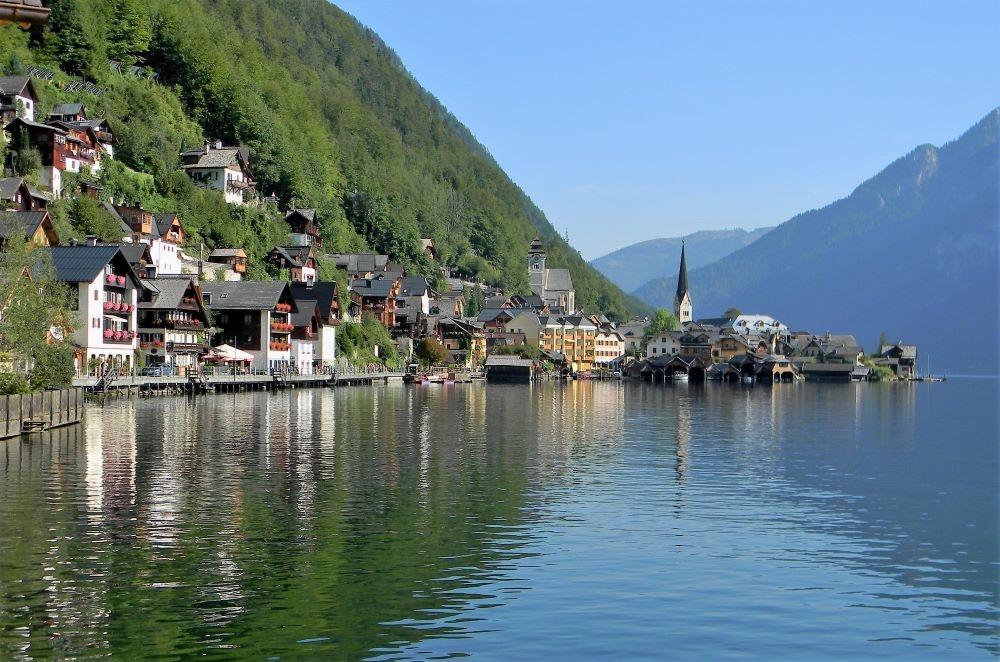
Hallstatt
Hallstattersee
Hallstattersee is located just south of Bad Goisern. It’s main town, Hallstatt, is famous as a timeless piece of Austrian small-town culture. You can find many pictures online of Hallstatt virtually unchanged in a hundred years. One unique thing about Hallstatt is you can take a train to the town from Bad Ischl or even Gemunded. It’s located opposite the town though, so a common tradition is to arrive by train, soak up the sights, and take a ferry across. The town itself is nestled cozily between the lake and the mountain, so the entire town is close-knit. The best place to view it, besides the train station, would be from the Aussichtspunkt Hallstatt, also known as the Postcard Angle. Stop by the Heritage Hotel for lunch with crystal lake views.
Besides the town itself, there are two main attractions. Firstly, you can take the funicular in town to the Museum of Mankind which features a tour of an old salt mine. Here, you get to dress up as a miner and take the train into the caves where you learn more about how life was during the booming alt industry. You’ll also be able to experience a slide commonly used by the miners and possibly take home some salt yourself. Also accessible by the funicular is the Hallstatt Skywalk, an observation deck that reaches out over the mountainside.
The second is Dachstein, which is accessible by cable car. Here, you can visit the World Heritage Spiral, which is an observation deck, or try your hand down the 5 Fingers during winter. Famous, though, is the Eishohle, or ice cave, which is a cavern where groundwater forms ice formations and stays frozen year-round. This cave, along with others without ice in them, are available for tours.
Trauensee
Trauensee is located in the northeastern part of the region and contains two major towns: Gmunden to the north and Ebensee to the south. Ebensee is a small town with access to the cable car that takes you up to one of the major ski areas in Salzkammergut – the Feuerkogel. Flanked by mountains on both sides, there is also an abundance of nature sites, like the snow cave, and hiking trails.
Gmunden to the north is one of the larger towns in the area having a major train station and its own tram system. Cobblestone streets snake between plazas and colorful buildings and is also well known for its various wellness facilities, like pinecone baths. Some key places to visit in the town are the lakeside plaza and Schloss Ort – an island castle open to visitors and is perfect for viewing the lake and the town at a glance. Many ferries also depart from Gmunden and you can even charter a private boat. In Christmas, the town plaza lights up with advent festivities. You can also visit Schloss Ort which has its own market. If you’re lucky, you’ll also be able to see floating decorations, including a floating nativity scene, on your way to the castle.
Scattered around the lake are small towns, churches, and castles, all of which you can hit with a drive from Ebensee to Gemunden. A dominant figure in the lake is the Trauenstein, a mountain that’s easily accessible by ferry. Here, you can find yourself with a magnificent view of the lake, as well as many hiking routes and even waterfalls.
Other Salzkammergut Attractions
The region has a lot more to offer besides what has been stated in this list. Other places worth visiting include Attersee, which is the largest of the lakes, and Bad Aussee, which is located in Styria and has a distinct culture and traditions. It is also one of the few places where you can find people commonly wearing Tracht, or the traditional dress including the aforementioned drindl . Salzkammergut also has a vibrant culinary culture. Owing the to the pastures and lakes, some of the more famous local delicacies include fresh baked breads, fresh fish, and even cheese. Besides winter, Salzkammergut is perfect to visit year-round. Should you wish to travel, we highly recommend visiting their website for you to learn more about all the wonders these lakes hold.
And by the way, all the locations are great for your Instagram.
Related Posts
I weep for America
I woke up this morning feeling a sense of doom in the world. I feel that I do not even know the country that I live in any longer. As someone that travels throughout the world and tries to make connections with the people and wildlife that I come across, it was incredible that America elected someone like Donald Trump. It is incredible that people would vote against their own best interest and seem to be happy about it. It is incredible how many racist, misogynistic and uneducated people there are in America.
Conservation Champions: 5 Exemplary Wildlife Preservation Efforts Making a Difference
Conservation Champions highlights five remarkable wildlife preservation efforts that are truly making a difference. From protecting endangered species to restoring habitats, these initiatives showcase the dedication and innovation of individuals and organizations committed to safeguarding our planet’s biodiversity. Discover the inspiring stories behind these exemplary conservation projects and the impact they have on our natural world.
Beyond the Big Five: Discovering Wildlife Wonders in Non-African Safari Destinations
“Beyond the Big Five” takes you on a thrilling journey to lesser-known safari destinations outside of Africa. From the lush rainforests of the Amazon to the vast plains of the Pantanal in South America, this article uncovers the hidden treasures of wildlife wonders that await adventurous travelers seeking a unique and unforgettable safari experience.


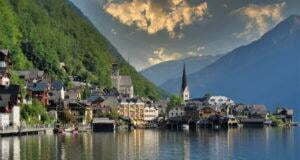

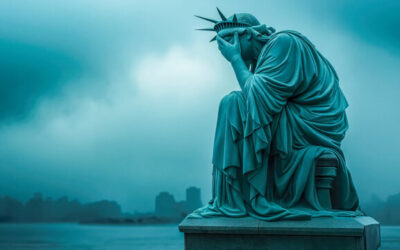
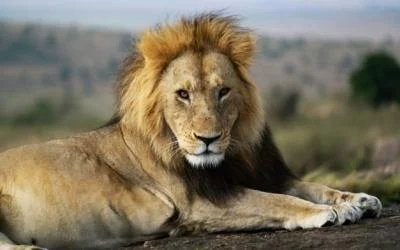
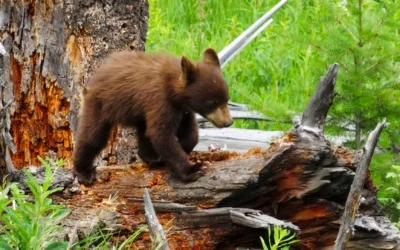
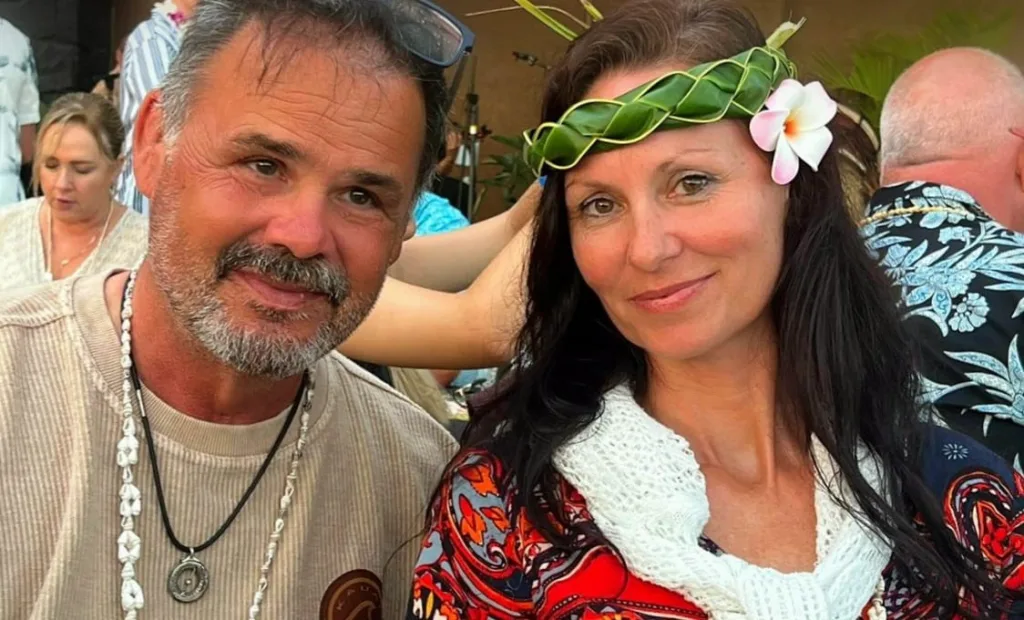


0 Comments